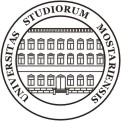
The Herzegovina-Neretva Canton is one of 10 cantons of the Federation of Bosnia and Herzegovina in Bosnia and Herzegovina.

Mostar is a city and the administrative center of Herzegovina-Neretva Canton of the Federation of Bosnia and Herzegovina, an entity of Bosnia and Herzegovina.

The University of Mostar is the largest public university located in Mostar, Bosnia and Herzegovina.

Istočni Mostar is a municipality located in Republika Srpska, an entity of Bosnia and Herzegovina. As of 2013, it has a population of 257 inhabitants.

The Croats of Bosnia and Herzegovina, often referred to as Bosnian Croats or Herzegovinian Croats, are the third most populous ethnic group in the country after Bosniaks and Serbs, and are one of the constitutive nations of Bosnia and Herzegovina. Croats of Bosnia and Herzegovina have made significant contributions to the culture of Bosnia and Herzegovina. Most Croats declare themselves Roman Catholics and speakers of Croatian.
Telecommunications in Bosnia and Herzegovina include radio, television, fixed and mobile telephones, and the Internet.

Herzegovina is the southern and smaller of two main geographical regions of Bosnia and Herzegovina, the other being Bosnia. It has never had strictly defined geographical or cultural-historical borders, nor has it ever been defined as an administrative whole in the geopolitical and economic subdivision of Bosnia and Herzegovina.

Hrušta is a village in the municipality of Nevesinje, Republika Srpska and for a small part also in the City of Mostar, Bosnia and Herzegovina.

Rabina is a village, partly in the municipality of Nevesinje, Republika Srpska and for a part in the City of Mostar, Bosnia and Herzegovina.

Žulja is a village in the City of Mostar, Bosnia and Herzegovina.
Franjo Džidić is a Bosnian retired professional football manager and former player.
League of Hercegovina-Neretva Canton is a fourth level league in the Bosnia and Herzegovina football league system. The league champion is promoted to the Second League of the Federation of Bosnia and Herzegovina - South.
The Cim Early Christian Basilica consists of the archaeological remains of an early Christian–late Roman basilica in Mostar's Crkvine suburb. The basilica is a national monument of Bosnia and Herzegovina.

The siege of Mostar was fought during the Bosnian War first in 1992 and then again later in 1993 to 1994. Initially lasting between April 1992 and June 1992, it involved the Croatian Defence Council (HVO) and the Army of the Republic of Bosnia and Herzegovina (ARBiH) fighting against the Serb-dominated Yugoslav People's Army (JNA) after Bosnia and Herzegovina declared its independence from Yugoslavia. That phase ended in June 1992 after the success of Operation Jackal, launched by the Croatian Army (HV) and HVO. As a result of the first siege around 90,000 residents of Mostar fled and numerous religious buildings, cultural institutions, and bridges were damaged or destroyed.

Operation Jackal, also known as Operation June Dawns, was an offensive of the Bosnian War fought between a combined Croatian Army (HV) and Croatian Defence Council (HVO) army against the Army of Republika Srpska (VRS) from 7–26 June 1992. The offensive was a Croatian pre-emptive strike against the VRS, a Bosnian Serb military formed in May 1992 from Yugoslav People's Army (JNA) units that were stationed in Bosnia and Herzegovina. The HV concluded that the JNA offensive operations of April and May 1992, resulting in the capture of Kupres and much of the Neretva River valley south of Mostar, were aimed at capturing or threatening the Croatian Port of Ploče and possibly Split. To counter this threat, the Croatian leadership deployed the HV, under the command of General Janko Bobetko, to the "Southern Front" including the area in which Operation Jackal was to be conducted.

Miljkovići is a populated settlement in the Mostar municipality, Herzegovina-Neretva Canton, Federation of Bosnia and Herzegovina, Bosnia and Herzegovina. It is situated southwest of the city of Mostar.

Banjdol is a populated settlement in the Mostar municipality, Herzegovina-Neretva Canton, Federation of Bosnia and Herzegovina, Bosnia and Herzegovina. It is situated southeast of the city of Mostar.

Rabina is a village, partly in the municipality of Nevesinje, Republika Srpska and for a part in the City of Mostar, Bosnia and Herzegovina.








